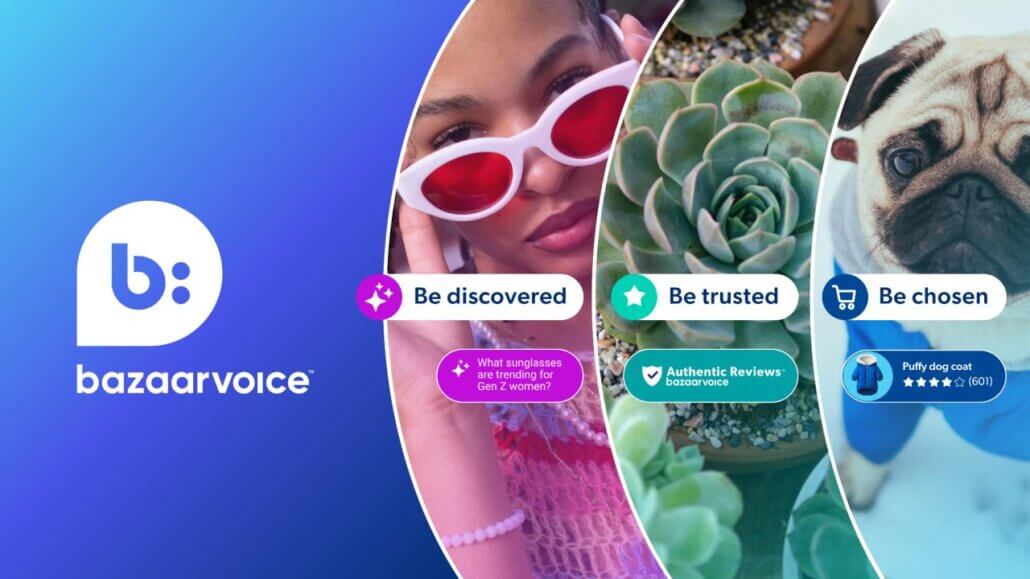February 7, 2024
The right influencer marketing partnerships increase brand awareness and boost your ROI. But like any great marketing initiative, these collaborations require a bit of upfront strategy and planning. Creating a strong influencer brief is the first step to ensuring the project is a success.
In essence, influencer marketing is about collaborating with the right individuals who can build awareness of your brand with their audience. It’s important for your brand equity to get these partnerships up and running well from the get-go.
By clearly outlining expectations, brand standards, campaign details, and more before a partnership kicks off, you can attract the best influencers to your project and help them create better, more powerful content.
What is an influencer brief?
An influencer brief is a document that outlines your influencer marketing campaign goals, guidelines, and content deliverables with any influencers you plan to collaborate with. It tells your creators what you need and expect from that in order to have a successful partnership that meets your objectives.
Your brand should have an in-house influencer brief template (accessible to anyone who communicates with creators) that contains basic information like brand guidelines, contact deets, and core values, etc, but that can also be customized to suit each influencer campaign.
Why should I partner with influencers?
The right influencers can help you create a goldmine of user-generated content (UGC) — reviews, photos, and videos created by customers rather than brands.
UGC is the key to earning customer trust and loyalty. 84% of millennials say UGC affects their purchasing decisions, while almost half of Gen Z customers say social media is their top inspiration for buying a product — even more so than recommendations from family and friends.
The six elements of a strong influencer brief
A strong influencer brief helps ensure you and the creators you partner with are on the same page. It’s one thing to say you want winning content — it’s another to show an influencer what winning content actually looks like.
It can also help you attract the right partners to your project.
Influencers — especially the good ones — are picky. They want to work with brands and retailers that align with their mission and audience. According to a recent Bazaarvoice influencer survey, 62% of content creators said they’ve turned down potential brand partnerships and 35% declined because the brief they received was unclear or not a good fit.
Digital creator Marina Mitrakos says strong influencer briefs are critical to affirming a good fit between brands and creators (and their audiences).
“It helps me decide, ‘Is this something that fits with who I am and my audience? Or is this something that feels off and I can’t produce for?’” Marina said. “Influencer briefs help set clear expectations and ensure both sides of the partnership that the project will work out.”
Creating an influencer brief will also save you time and money. No more going back and forth with creators on revisions or retakes. No more off-brand content that makes you scratch your head and ask, “Where did they get that idea?” No more confusion from partners about what to include in a post.
Here’s six elements to include in an influencer brief to attract the right influencers and create effective content together.
1. Your brand story
Building brand awareness and maintaining brand loyalty isn’t easy. It’s difficult enough to do this with brand-generated content. But influencer-created content? Even trickier!
The key to helping influencers create content that generates brand loyalty? Storytelling. After all, research has shown that the human brain is wired for stories.
A brief that outlines the story you want influencers to tell will help them craft content that goes beyond the product specs. This section gives creators the info they need to paint a bigger picture of your brand.
- What makes your company unique?
- Is there a compelling origin story?
- What’s your brand’s “why”?
Explain those answers here — so influencers can tell their audience great stories about your brand. This is the kind of information that helps followers more easily connect emotionally with your products.
2. Campaign summary
Influencers will have immediate questions: What do they need to do? What are your goals?
Answer those questions in your campaign summary. Include an overview of the campaign, deliverables, and overall objectives. With influencer briefs, clarity is the name of the game. Consider starting with a one-sentence, high-level description of the campaign. For example:
This is our holiday influencer campaign, where you and your followers can get to know our brand and seasonal products better through fun and creative videos.
After the 30,000-foot overview, dive into the logistical details. For example:
- How many posts does the influencer need to create?
- What hashtags should they use?
- What products should they promote?
- What’s the theme of the campaign?
- What do you hope the campaign will do? (Increase brand awareness, sell more of a specific product, drive X amount of additional UGC like social imagery or product reviews from the influencer’s audience)
When brands and creators disconnect on campaign fundamentals like these, it can lead to confusion, frustration, and ineffective content. That’s the exact opposite of what you want.
3. Product usage
This section is the instruction manual part of your influencer brief. After reading, an influencer should know exactly how your product works and how to use it. This part of your brief should also outline expectations for how they showcase the product. Should the content show the product in action or do you want an unboxing video?
For example, say you’re a pet care company. Maybe you want a cute video of a dog wagging its tail and sniffing the box as its human opens it. So much excitement!
Or maybe you want to show the durability of your new chew-proof dog toy and suggest the influencer record them playing tug-of-war with their pup.
In this section, you’ll also want to outline how to overcome hesitations users have about the product. What are some common questions that consumers ask about the item? How could an influencer’s content answer those questions?
For instance, maybe the same pet care company has a product that allows pet owners to give their pups peanut butter as a treat. Great news for dogs — but pet owners might worry it’s hard to clean. An influencer brief could suggest a video showing the creator taking the toy apart and easily wiping off the mess. With influencer marketing, the possibilities are endless.
4. Brand guidelines
Every piece of content an influencer creates should strengthen your brand and align with your voice or standards. If you have brand guidelines, send them over. If you don’t, here’s a few suggestions to set influencers up for success:
- Words your brand likes to use (and ones you never use)
- Specific colors you want your photos and videos to include
- Existing product descriptions, so the influencer doesn’t have to reinvent the wheel to describe how the item works
These are all helpful tidbits to tell influencers before they create UGC for your brand. Your influencer brief should include details about messaging, tone, content must-dos, etc.
Think of your brand guidelines as guardrails — not total roadblocks. (Remember, allow some space for the influencer to be creative. That’s why you’ve hired them!) Instead, these guidelines are helpful barriers that keep collaborators’ content from straying off course.
5. Content inspiration
Sometimes, lists of do’s and don’ts can only go so far. Creatives need to see in-the-wild examples of what you have in mind. This is where content inspiration like mood boards come into play.
If you’ve worked with creators before, this piece of your influencer brief can include links to past work that generated great results.
However, if you’re new to influencer partnerships, don’t fret. Create a folder or mood board that includes examples of effective work. For example, link to your favorite posts on the company’s Instagram page or in-house videos that were popular on TikTok.
Bonus: Create an “anti” mood board. Can you find examples of content that absolutely doesn’t work for your brand? Seeing “what not to do” can help guide influencers and keep them from creating misaligned content.
Finally, are there other brands or retailers whose work you want to emulate? These don’t have to be direct competitors. Often, they’re companies in another industry whose content you enjoy.
Maybe their campaigns always include humor. Or the lighting in their photography and videos always makes the product look amazing. Include all that inspiration here — but be sure to also explain how your campaign will differ.
6. Payment terms
Many influencers expect to be paid for their brand partnerships. This area of your influencer brief should include:
- Terms and conditions (for example, do they need to sign an NDA? Is there a cancellation clause?)
- Compensation type (flat rate, commissions, affiliate income)
- Payment method
- Payment dates
While the main goal of an influencer brief is to drive on-brand, impactful content, this section also helps prevent headaches and awkwardness — for all parties.
You don’t have to talk exact numbers at this stage, but clearly explain the terms of the collaboration up front so you don’t get into messy payment or legal disputes down the road.
Common questions about influencer partnerships
The world of influencer campaigns is still relatively new in the grand scheme of marketing. Understandably, many brands and retailers have questions about how to hire collaborators, when and how to use an influencer brief, and best practices for effective collaboration.
Here are some FAQs we get at Bazaarvoice — with answers to make your journey smoother.
When should I use an influencer brief?
Any time you partner with an influencer for a campaign, you want to use an influencer brief. It helps produce better content and ensures everyone knows what they’re getting into before the project begins.
How much should I include in my brief?
If you’re unsure about what to include or leave out, err on the side of more detail.
Remember, you’ve enlisted a creator to get the word out about your brand or company. The more they know, the more effective their content will be.
Alternatively, the less they know — well, the less likely they’ll be able to deliver on expectations. A strong influencer brief can save you from wasted time, wasted money, and the stress and frustration of not getting what you asked for.
How do I know if I’ve chosen the right influencer?
Unfortunately, it’s hard to be 100% sure without a crystal ball. But there are some best practices to follow. Before you even reach out to a potential collaborator, you want to make sure they’re a good fit for your brand or product. Sift through influencers’ content before contacting them.
- What kind of content do they usually post?
- Are their feeds video-heavy or photo-heavy?
- What value do they provide their audience?
- What’s their skill set? (Injecting humor into content? Explaining complicated concepts in simple terms? Connecting on a personal level with followers?)
It’s also helpful to clearly establish your own goals before contacting influencers. What kind of audience do you want to reach? For example, Kraft Heinz partnered with the Influenster community to identify key consumers, then matched them with products they would likely enjoy. Thanks to this targeted strategy, Kraft gained 20,000 new reviews and 39 million impressions.
Determining your audience in advance will also prevent bad-fit rejections. According to our influencer research, 49% of creators have turned down a brand partnership because it didn’t align with their values. And sometimes the potential collaboration just doesn’t make sense — like asking an influencer to promote a product they wouldn’t use in their real life.
“I remember when I was asked to partner with a baby toy company,” said Marina Mitrakos. “If they did some more research on me, they’d realize that I don’t have a child or younger siblings, and I’m not expecting soon. So if I said yes to the collaboration, I’d be putting out content that doesn’t make sense.”
Oops!
Don’t make the same mistake. Do the up-front research to ensure a partnership is aligned before diving into campaign details. It might save you from a little embarrassment.
An influencer brief: Your ticket to authentic, effective content
Influencer collaborations certainly have a lot of moving pieces. But that doesn’t mean the process has to be disorganized or confusing — for either party.
A strong influencer brief is your key to more effective partnerships. This document streamlines workflow, clearly outlines expectations and standards, eliminates confusion, and helps your brand get the content it needs.
While it may take some work up front, creating an influencer brief is well worth the time. By including the six sections outlined above, you’ll be able to set any collaborator up for success.
If you’re ready to partner with reliable, influential creators to amplify your brand, check out Bazaarvoice Creator Partnerships.










